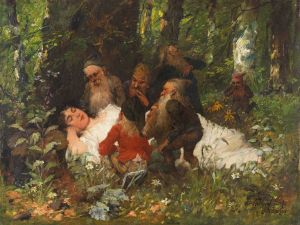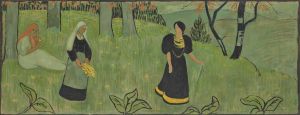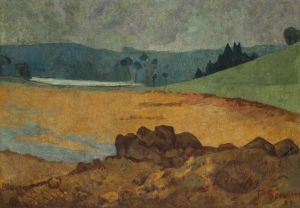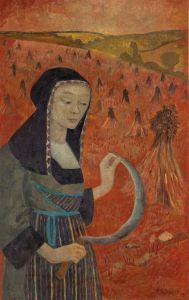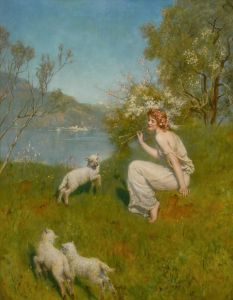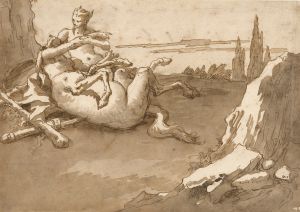
Les Fées aux Balles d’or
A hand-painted replica of Paul Sérusier’s masterpiece Les Fées aux Balles d’or, meticulously crafted by professional artists to capture the true essence of the original. Each piece is created with museum-quality canvas and rare mineral pigments, carefully painted by experienced artists with delicate brushstrokes and rich, layered colors to perfectly recreate the texture of the original artwork. Unlike machine-printed reproductions, this hand-painted version brings the painting to life, infused with the artist’s emotions and skill in every stroke. Whether for personal collection or home decoration, it instantly elevates the artistic atmosphere of any space.
Paul Sérusier's painting Les Fées aux Balles d’or (The Fairies with Golden Balls) is a work created by the French Post-Impressionist artist and a key member of the Nabis movement. Sérusier, known for his innovative approach to color and form, painted this piece in 1891. The painting reflects the artist's interest in symbolism and his exploration of mystical and spiritual themes, which were central to the Nabis' artistic philosophy.
The artwork depicts an enigmatic scene featuring fairies holding golden balls, set against a dreamlike, abstracted landscape. Sérusier's use of bold, flat colors and simplified forms aligns with the stylistic principles of the Nabis, who sought to move beyond naturalistic representation and instead focus on the emotional and symbolic resonance of their subjects. The golden balls held by the fairies are thought to symbolize light, energy, or spiritual enlightenment, though the exact interpretation is left open to the viewer.
Sérusier's work during this period was heavily influenced by his encounter with Paul Gauguin in Pont-Aven in 1888. Gauguin's emphasis on the use of pure color and the importance of imagination over direct observation had a profound impact on Sérusier and his subsequent artistic development. Les Fées aux Balles d’or exemplifies Sérusier's application of these principles, as the painting eschews realistic detail in favor of a more stylized and evocative approach.
The painting is also notable for its connection to the broader Symbolist movement, which sought to convey ideas and emotions through symbolic imagery rather than literal representation. Sérusier and the Nabis were deeply influenced by Symbolist literature and philosophy, and their works often incorporated themes of mysticism, mythology, and the spiritual realm.
Today, Les Fées aux Balles d’or is recognized as an important example of Sérusier's contribution to the development of modern art. It demonstrates his ability to synthesize the influences of Gauguin, Symbolism, and his own innovative vision into a cohesive and compelling artistic statement. The painting is housed in the Musée d'Orsay in Paris, where it continues to be appreciated for its unique blend of symbolism, color, and form.





